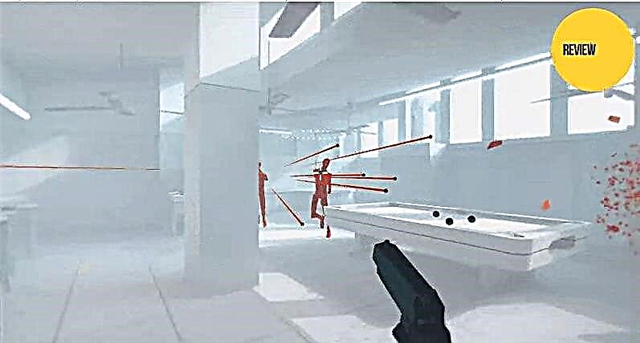They say that space is the ultimate frontier, but the oceans have enough of their own mysteries, and to their list you can add the world under the waves. Despite our primitive knowledge of the underwater world, there is a lot of mesmerizing things to find. What else can you say when you find completely submerged cities? Cities that come to life like they're out of comics. Such finds may even surpass the fictional lost Atlantis. All in all, let's dive into 10 cities of the ancient world, lost under water.
10. Ruins in the Aegean Sea
As one of the oldest civilizations on earth, Greece has ample historical locations. However, the ruins in the Aegean Sea are one of the most recent finds in Greek history. First seen from the small islet of Delos in 2014, the ruins, which were initially mistaken for a port, turned out to be a pottery workshop. An oven, ceramic pots, a retaining wall, and other unidentified structures that occupy nearly 12 acres of the seabed. It is believed that this settlement sank 4,500 years ago. Researchers believe it may be the lost ancient city of Kane. The city where the Athenians defeated the Spartans.
9. Cuban city ruins
Finding an ancient city lost under water is always exciting, but when this city is under the Bermuda Triangle, one of the most mysterious geographic locations in the world, you never know what to think. In 2001, SONAR took photographs off the Cuban coast, showing geometric structures. Considering that they are located at a depth of 600-800 meters, it is difficult to imagine how and when they could have been built. Some experts ventured to suggest that they could see the pyramid and the Sphinx, others - they decided that this is the lost city of Atlantis. It is curious that research, after the discovery of such a find, was carried out critically little, which is why there are many conspiracy theories claiming that the state is hiding something. The creators of The X-Files and Ancient Aliens are probably already drooling over the idea of creating a new series based on this story.
8. Ruins of Yonaguni
The ruins of Yonaguni are known as the Japanese Atlantis. 2000 years ago, the city was flooded on the coast of Yonaguni. It is believed that this was due to severe seismic activity or something like that. As with many other underwater monuments, many researchers deny Yonaguni and its surrounding structures, as they believe that it was formed by natural erosion. However, the buildings have distinct sharp corners, shapes, and what appears to be columns. All of this supports the argument that the creator is an ancient civilization. The structure that is most difficult to call formed by nature is the stepped pyramid. It rises 25 meters. Masaaki Kimura, a marine geologist, thinks it might be Mu. One of several lost continents that have been theorized for centuries.
7. Lost city of Alexandria
Everything related to Egyptian history has always been meaningful to historians, but when they find an ancient city ruled by Cleopatra, everything gets out of hand. The ancient city of Alexandria is almost perfectly preserved under water. The city disappeared due to natural disasters such as tsunamis and earthquakes, and after 1600 years it was discovered in 1988.
Scientists have found amazing artifacts, architectural beauty, discovered the economic strength of a city that was second only to Rome. The oldest existing university was also discovered. The most fabulous find of all is the Alexandria Lighthouse, which sent ships to the port more than 2,000 years ago.
6. Pavloretri, Greece
Pavloretri is the modern name of the city, whose original name has been lost in time. Many researchers believe that this is the oldest flooded city in the world. It went under water over the southern coast of Greece 5000 years ago. Nicholas Flemming discovered the city in 1967 and was added to the map a year later. The city is surprisingly well designed: a road, houses, gardens, temples, a cemetery, and a complex water system. Historians believe that an earthquake could have caused the destruction of Pavloretri. The same thing that destroyed the Minoan civilization on the island of Crete approximately in 1000 BC.
5. Ruins of Lake Titicaca
Lake Titicaca is located between Bolivia and Peru. It is the largest lake with clear water in South America. It is famous for being the cradle of the ancient civilizations of Peru, including Purakas, Tiwanakus and Inca. They left everything in ruins, for example, a mysterious underwater temple, which is 1000-1500 years old, which indicates the existence of the tribe.
In the Inkian myths about the creation of life, the god Kon Tikui Viracocha emerged from the lake. After he commanded the sun, moon and stars to climb into the sky, he created people from stone and ordered them to populate the world. In this regard, the Inca believed that Lake Titicaca is their place of origin and after death the spirits return to the lake. In 2000, a team of archaeologists discovered a huge temple, which is twice the size of a football field. A long road, fields for crops, and a wall 800 meters long were also found under the lake.
4. Lost city of Tonis-Heraklion
Tonis Heraklion was nothing more than an ordinary legend from historical texts. Called Tonis by the Greeks and Egyptians, this is one of the places that Helen visited with her beloved Paris. Frank Godibault and his team, in collaboration with the Egyptian High Council of Antiquities, adopted an unusual questionnaire approach that uses the most sophisticated technical equipment. In this regard, they were able to locate, map and excavate parts of the city. The artifacts raised to the surface prove that the city used to be a large trade center and a bustling port city. So far, archaeologists have stumbled upon 60 ancient shipwrecks along with hundreds of anchors and coins from all over the sea. On the giant stone tablets it is written in Greek and Egyptian, and the sculpture that used to decorate the city temple was found later.
3. Atlit Yam, Israel
Atlit Yam is a Neolithic village located in the Mediterranean Sea, next to the Israeli Haifa. It existed between 6900 and 6300 A.D. Many researchers believe that the city went to the bottom due to the tsunami. The marine archaeologist Yehud Gallili discovered the city in 1984, and since then, marine experts have excavated a lot and have found many houses near the graves, and structures that could be used as tables. The largest find turned out to be a skeleton, and in addition to it, 65 human remains. Thanks to such a find, experts were able to find the earliest cases of tuberculosis - an excellent insight into the structure of the human body thousands of years ago.
2. Shi Chen, China
Unlike other cities on this list that sank for mystical reasons, it was deliberately flooded in 1959 to replace it with a dam and provide electricity to a hydroelectric plant. The Lost City was over 1400 years old when it came to the surface. "Even history cannot get in the way of development." In 2001, for educational and construction purposes, the Chinese government again visited the floodplain to see what was left of the metropolis. It was revealed that the whole city remained intact, including the wooden beams and stairs. During their research, they learned a lot about the history of the city. For example, art was practiced in the city and over 200 works were found within the city walls. Some of them date back to the late 1700s.Ancient ruins are now being rediscovered and mapped again, with a renewed wave of appreciation for architecture and history that were nearly lost forever.
1. The Lost City of Lord Krishna, India
So far, as you read this list, you have seen cities, architecture and sculpture of incredible historical importance. Some even confirmed old legends, but nothing beats the remains of a lost city on the shores of the Gulf of Cambay in India, which could completely rewrite history. The city was discovered in 2001 during a course in environmental pollution research. The Indian National Institute of Oceanic Technology, using a sonic locator, identified giant geometric structures 1,200 meters below the surface of the ocean.
Debris that has been recovered from the excavation site includes building material, earthen vessels, wall parts and human bones that are more than 9,500 years old. The city belongs to that time period in which there were no cities, only small ones, as modern archaeologists believed. Some of the recovered artifacts are 32,000 years old. Experts concluded that the area could have gone under water 9,000 years ago at the end of the last ice age, when the glaciers melted. Accordingly, the city existed between 32,000 and 9,000 years ago. Divers also found a cobblestone road, a sand wall and evidence of a thriving port. Researchers have stated that these ruins are the remains of the ancient and legendary city of Dvarika.
The first large city appeared in records for the first time in Mesopotamia about 4500 years ago. Before that, everything consisted of small settlements. Writer and director Graham Hancock, who specializes in the discovery of ancient civilizations, argues that there is nothing that, on par with the underwater city of Cambay, has created the same effect on our vision of the ancient world. He also mentioned a big chronological problem associated with this find - "This means that the entire model of the founding of our civilization, with which archaeologists are now working, must be rewritten from scratch."
Epilogue
At the moment, we have confirmed old legends, dug up secrets, studied the earliest people and discovered the lost continents. Only 5% of the ocean has been explored, there are unknown mysteries that are much more complicated, or even simpler, which can and will change what we know about us and our existence.
We recommend watching:
An overview of five unique ancient settlements that were discovered flooded after thousands of years:



